#krysuvik volcanic system
Explore tagged Tumblr posts
Text

11 notes
·
View notes
Link
People advised against volcano path today
The Geldingadalir volcanic eruption site was quiet last night, according to police officer Guðmundur Eyjólfsson. People started arriving early this morning to hike to the volcano, but the wind today is expected to blow gases over the new hiking trail.
#english#RUV#Iceland#Reykjanes Peninsula#Reykjanes Volcanic Belt#Krysuvik Volcanic System#Geldingadalir#eruption#Shield volcano#Fissure vent#Geldingardalur valley#Fagradalsfjall#Geldingadalur volcano#Fagradalsfall eruption#Geldingadalur eruption#Geldingadalir volcanic eruption#Police#Search & Rescue#Hiking trail#Search & Rescue Volunteers#Volunteers#New Hiking Trail
0 notes
Text
Watch | Icelandic volcano's first eruption in 900 years
Watch | Icelandic volcano’s first eruption in 900 years
In March, Iceland witnessed the awakening of a volcano near its capital Reykjavik, for the first time in 900 years Streams of red lava bubbled and flowed out of a fissure in a valley in Geldingadalur, close to Mount Fagradalsfjall on the Reykjanes peninsula in southwestern Iceland. As the lava flow slowed under rain showers, a blue gas plume and a vapour cloud rose from the site and experts said…
View On WordPress
#awakening of a volcano video#Bardarbunga volcanic system video#Geldingadalur video#Holuhraun video#Iceland video#Icelandic Meteorological Office video#Krysuvik video#Krysuvik volcanic system video#Mount Fagradalsfjall video#Mount Keilir video#Reykjanes peninsula video#Reykjavik video#southwestern Iceland video#the hindu study iq video#The Hindu video#the hindu videos#video#volcano erupting video#volcano video
0 notes
Text
Volcanic eruption near Reykjavik
Volcanic eruption near Reykjavik
The tabular volcano Fagradalsfjall is part of the Krysuvik volcanic system on the Reykjanes peninsula in southwest Iceland, around 40 kilometers from the capital Reykjavik. Intensive seismic activity had been measured around the volcanic mountain since Saturday. As of Monday, the weather authority IMO registered more than 10,000 earthquakes there, two of them with a magnitude of more than…

View On WordPress
0 notes
Text
Iceland Volcano Eruption!!! Look at the damage!
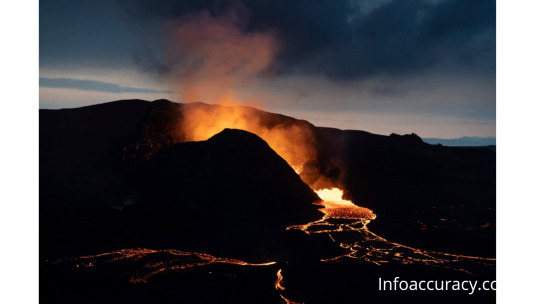

Iceland Volcano Eruption: A volcano near Iceland's capital city and primary airport has begun to erupt. According to the Icelandic Meteorological Office, the eruption is around 20 miles southwest of the city of Reykjavik, close to the Fagradalsfjall mountain. Molten lava is seen erupting from a small mountain fracture in a live video feed from the scene. The eruption comes after several days of minor tremors along a peninsula that is considered to be a seismic hotspot. A 500–750 metre long breach in the same region erupted in stunning lava jets in March of last year, and activity persisted into September. Although it was the first to occur in the region in at least 800 years, earthquakes and volcanic eruptions are nothing new in the nation. The island has an eruption on average every four to five years and is situated atop a volcanic hotspot in the North Atlantic. Iceland's airline industry is on high alert due to recent volcanic activity near Keflavik Airport, which handles all international air traffic in the country. In order to prohibit aeroplanes from flying directly over the location, a "code red" has been issued; however, this may be lifted following additional research. It is recognised that Icelandic eruptions can have a negative impact on European aviation. When the Eyjafjallajokull volcano erupted in 2010, it released clouds of ash and particles into the atmosphere that grounded flights between Europe and North America for several days. Millions of travellers were stranded as more than 100,000 planes were grounded. As of right now, no airline flights are being impacted, according to Iceland's national airport authority.
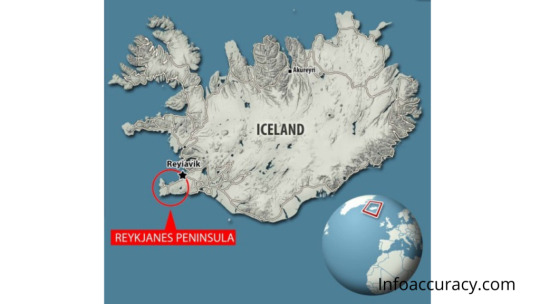
The Reykjanes peninsula in southwest Iceland contains the Krysuvik volcanic system, which includes Mount Fagradalsfjall. The most active number of volcanic systems in Europe is 32, and it is found in Iceland. On average, an eruption has occurred in the nation every five years. A rift in the ocean floor that separates the tectonic plates of Europe and North America runs across the large island near the Arctic Circle. In part, the movement of these plates is what causes Iceland to experience such high levels of volcanic activity. Every four to five years, Iceland, which is situated atop a volcanic hotspot in the North Atlantic, experiences an eruption. The Eyjafjallajokull volcano eruption in 2010 was the most upsetting recent event; it blasted clouds of ash and dust into the skies and halted air transport between Europe and North America for days due to worries the ash could harm jet engines. Millions of people were stranded because more than 100,000 flights were cancelled.
Volcanic eruptions in the past
The longest volcanic eruption to have occurred in Iceland in the past 50 years has been officially proclaimed to be over. Thousands of tourists came to see the spectacle and the lava flows. According to Brynds r Gsladóttir, a natural hazards expert at the Icelandic Meteorological Institute, "this eruption is now deemed over" because it has been three months since the last emission of lava (IMO). However, the organisation that keeps track of volcanic activity warned trekkers to exercise caution and said it will keep an eye on the area. On March 19, lava started to erupt near Mount Fagradalsfjall, which is located about 25 miles (40 km) south-west of the country's capital Reykjavik. However, this eruption, Iceland's sixth in the last 20 years, lasted six months and was the longest eruption ever recorded. On September 18, shortly after setting that record, the lava started to emerge. However, this didn't happen until more than 140 million cubic metres of magma had spilled into the valleys of Geldingadalur. The eruption, which was relatively simple to reach, developed into a significant tourist destination, drawing more than 350,000 tourists, according to the Icelandic Tourist Board. There could be more eruptions in the vicinity, according to experts. The IMO stated that "history teaches us that volcanic activity there occurs in cycles." After raising the eruption alert level to orange two weeks prior, the institute last week reduced the risk of an eruption of Grmsvötn, another Icelandic volcano. The most active volcano in Iceland, which erupts on average every five to ten years, is located in the island's centre beneath a massive glacier in a less travelled area. Also read: Pelosi arrives in Malaysia creates tension about a potential trip to Taiwan as No.1 priority Read the full article
0 notes
Photo

Iceland’s Fagradalsfjall erupts, lighting up sky near Reykjavik
Iceland’s Fagradalsfjall erupts, lighting up sky near Reykjavik

A volcano erupted just 40km (25 miles) from Iceland’s capital Reykjavik on Friday, with red lava spewing out of the ground and a crimson glow lighting up the night sky.
Streams of red lava could be seen flowing out of a fissure in the ground in Geldingadalur, close to Mount Fagradalsfjall on the Reykjanes Peninsula in southwestern Iceland, in footage filmed by a coastguard helicopter.
While Iceland’s Keflavik International Airport and the small fishing port of Grindavik are just a few kilometres away, the area is uninhabited and the eruption was not expected to present any danger.
“The eruption began at Fagradalsfjall in Geldingadalur at about 20:45 GMT tonight. The eruption is considered a small one and the eruption fissure is about 500-700 metres (1,640-2,300 feet) long. The lava is less than 1 square kilometre (0.4 square miles) in size,” the Icelandic Meteorological Office (IMO), which monitors seismic activity, said in a statement.
“There is little eruption activity in the area.”
The eruption site is in a valley, about 4.7km inland from the southern coast of the peninsula.
Police and coastguard officials raced to the scene, but the public has been advised to stay away and the main road from the capital region to Keflavik airport was temporarily closed on Friday.
Dormant for 900 years
There were no reports of ash fall, although tephra – solidified magma rock fragments – and gas emissions were to be expected.
Police ordered residents living east of the volcano to close their windows and stay indoors due to the risk of possible gas pollution carried by the wind.
Gas emissions – especially sulphur dioxide – can be elevated in the immediate vicinity of a volcanic eruption, and may pose a danger to health and even be fatal.
Pollution can exceed acceptable limits, even far away, depending on the winds.
Friday’s eruption took place in the Krysuvik volcanic system, which does not have a central volcano.
Eruptions in the region are known as effusive eruptions, where lava flows steadily out of the ground, as opposed to explosive ones which spew ash clouds high into the sky.
A new video of the eruption at Geldingardalur valley in Reykjanes peninsula. Taken from the Coast Guard helicopter. #Reykjanes #Eruption #Fagradalsfjall pic.twitter.com/B862heMzQL
— Icelandic Meteorological Office – IMO (@Vedurstofan) March 19, 2021
The Krysuvik system has been inactive for the past 900 years, according to the IMO, while the last eruption on the Reykjanes Peninsula dates back almost 800 years, to 1240.
But the region has been under increased surveillance for several weeks after a 5.7-magnitude earthquake was registered on February 24 near Mount Keilir on the outskirts of Reykjavik.
That quake has been followed by an unusual number of smaller tremors – more than 50,000, the highest number since digital recordings began in 1991.
The seismic activity has moved several kilometres southwest since the quake, concentrating around Mount Fagradalsfjall, where magma was detected just one kilometre under the Earth’s surface in recent days.
Seismic activity had however slowed in the past few days.
Land of fire and ice
Iceland has 32 volcanic systems currently considered active, the highest number in Europe. The country has had an eruption every five years on average.
The vast island near the Arctic Circle straddles the Mid-Atlantic Ridge, a crack on the ocean floor separating the Eurasian and North American tectonic plates.
The shifting of these plates is in part responsible for Iceland’s intense volcanic activity.

The red shimmer from magma flowing out from the erupting Fagradalsfjall volcano behind the landmark Blue Lagoon, some 45km west of the Icelandic capital Reykjavik on Friday
The most recent eruption was at Holuhraun, beginning in August 2014 and ending in February 2015, in the Bardarbunga volcanic system in an uninhabited area in the centre of the island.
That eruption did not cause any major disruptions outside the immediate vicinity.
But in 2010, an eruption at the Eyjafjallajokull volcano sent huge clouds of smoke and ash into the atmosphere, disrupting air traffic for more than a week with the cancellation of more than 100,000 flights worldwide which left some 10 million passengers stranded.
Read full article: https://expatimes.com/?p=19320&feed_id=38926
0 notes
Text
Mind-blowing photos reveal Icelandic eruption that was 900 years in the making
https://sciencespies.com/nature/mind-blowing-photos-reveal-icelandic-eruption-that-was-900-years-in-the-making/
Mind-blowing photos reveal Icelandic eruption that was 900 years in the making

A volcano that spewed glowing red lava near Iceland’s capital Reykjavik after awakening for the first time in 900 years appeared to be subsiding on Saturday, posing no danger to people, experts said.
Streams of red lava bubbled and flowed out of a fissure in a valley in Geldingadalur, close to Mount Fagradalsfjall on the Reykjanes peninsula in southwestern Iceland.
As the lava flow slowed under rain showers on Saturday, a blue gas plume and a vapor cloud rose from the site, just 40 kilometers (25 miles) from the capital and near a popular tourist destination, the Blue Lagoon geothermal spa.

(Anton Brink/Anadolu Agency/AFP)
The eruption occurred on Friday around 20:45 GMT, lighting up the night sky with a crimson glow as hundreds of small earthquakes shook the area.
While Iceland’s Keflavik International Airport and the small fishing port of Grindavik are just a few kilometers away, the zone is uninhabited and the eruption did not present any danger to the public.
“The eruption is considered small at this stage and the volcanic activity has somewhat decreased since yesterday evening,” the Icelandic Meteorological Office (IMO), which monitors seismic activity, said in a statement on Saturday.

(Anton Brink/Anadolu Agency/AFP)
It said the “eruptive fissure” measured approximately 500 to 700 meters (1,640 to 2,300 feet).
The lava area, it added, was less than one square kilometer (0.4 square mile), with small lava fountains.
Speaking to reporters, University of Iceland geophysicist Magnus Tumi Gudmundsson described the valley as an “ideal” spot for the eruption, likening it to “a bathtub the lava can slowly leak into.”
IMO earthquake hazards coordinator Kristin Jonsdottir meanwhile said it was “very likely the eruption will last for the next few days”.
Friday’s eruption took place in the Krysuvik volcanic system, which does not have a central volcano, about five kilometers inland from the southern coast.
Sigurdur Kristmundsson, a 54-year-old Grindavik port official, told AFP that locals were exhilarated by the eruption.
“Nobody is in danger or anything like that. So I think people are excited and not afraid of it.”

(Anton Brink/Anadolu Agency/AFP)
Dormant for 900 years
Access to the area was initially blocked off but later opened to the public, though Iceland’s Department of Civil Protection and Emergency Management stressed the several-hour hike from the nearest road was only recommended for those “used to being outdoors in difficult conditions.”
Gases from a volcanic eruption – especially sulfur dioxide – can be elevated in the immediate vicinity, and may pose a danger to health and even be fatal.
Gas pollution can also be carried by the wind.
“Currently gas pollution is not expected to cause much discomfort for people except close up to the source of the eruption. The gas emissions will be monitored closely,” the IMO said.
The Krysuvik system has been inactive for the past 900 years, according to the IMO, while the last eruption on the Reykjanes peninsula dates back almost 800 years and lasted about 30 years, from 1210 to 1240.
But the region had been under increased surveillance for several weeks after a 5.7-magnitude earthquake was registered on February 24 near Mount Keilir on the outskirts of Reykjavik.
Since then more than 50,000 smaller tremors had been registered, and magma was detected just one kilometer under the Earth’s surface in recent days near Fagradalsfjall.
Geophysicist Gudmundsson said the eruption signaled a new period “which may last centuries with eruptions, possibly 10 years to 100 years apart.”

(Anton Brink/Anadolu Agency/AFP)
Land of fire and ice
Iceland has 32 volcanic systems currently considered active, the highest number in Europe. The country has had an eruption every five years on average.
The vast island near the Arctic Circle straddles the Mid-Atlantic Ridge, a crack on the ocean floor separating the Eurasian and North American tectonic plates.
The shifting of these plates is in part responsible for Iceland’s intense volcanic activity.
The most recent eruption was at Holuhraun, beginning in August 2014 and ending in February 2015, in the Bardarbunga volcanic system in an uninhabited area in the center of the island.
That eruption did not cause any major disruptions outside the immediate vicinity.
But in 2010, an eruption at the Eyjafjallajokull volcano sent huge clouds of smoke and ash into the atmosphere, disrupting air traffic for more than a week and cancelling more than 100,000 flights worldwide, which left some 10 million passengers stranded.
© Agence France-Presse
#Nature
0 notes
Text
Most powerful force of energy ever experienced



2 notes
·
View notes
Photo
Iceland has recorded more than 40,000 earthquakes in the past three weeks. The Krysuvik volcanic system has been inactive for the past 900 years, according to the meteorological office, while the last eruption on the Reykjanes peninsula dates back almost 800 years to 1240.
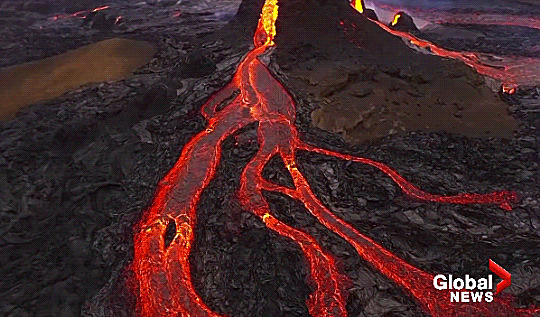

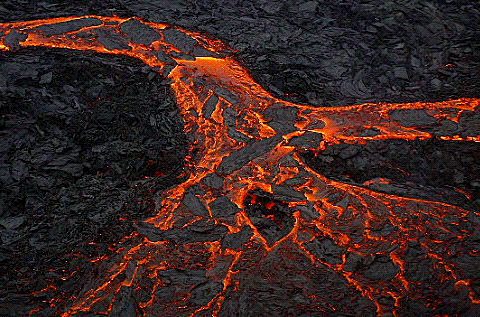
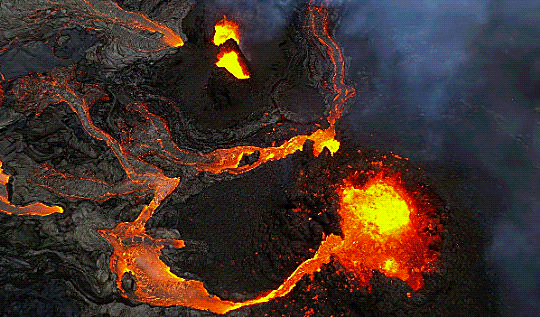

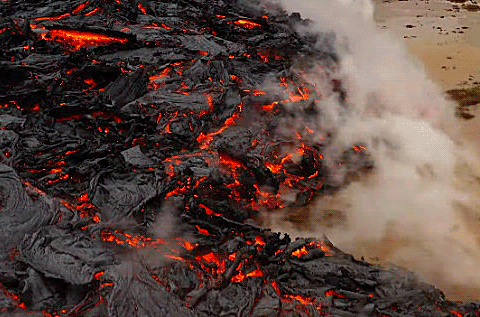

volcanic eruption in Iceland
411 notes
·
View notes
